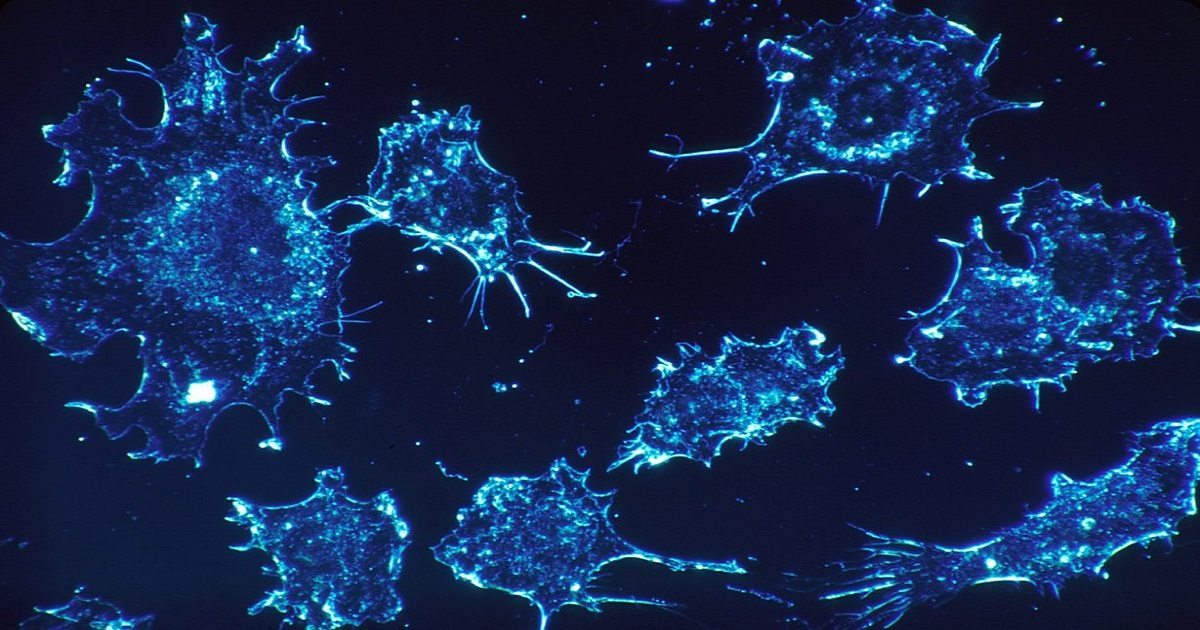Category: Treatments

Gene Therapy Moves Scientists One Step Closer to a Mesothelioma Cure
Finding a cure for mesothelioma did not seem possible just several years ago. The asbestos-caused cancer is extremely aggressive, and the cancerous cells invade the lungs and spread throughout the body often rendering standard cancer treatments ineffective against the disease. However, with the recent advances in gene therapy, now being touted as the next frontier in medicine, there is new hope in the medical field that cures are on the horizon for patients with rare and incurable diseases such as mesothelioma.
Ricki Lewis, a New York-based geneticist and author, explores this “next frontier” in her latest book The Forever Fix. The book follows the journey of the use of gene therapy to restore the vision of a young boy who was nearly blind from a hereditary disorder. The doctors replaced the single defective gene in the New York boy’s eyes that prevented his eyes from using vitamin A to send visual signals to his brain. Once the defective gene was replaced, the boy’s vision was restored and no further treatments or surgery were required.
“The goal of gene therapy is to replace faulty instructions,” said Lewis, who has a Ph.D in genetics from Indiana University. “It’s not right for every disease. But it is an approach that can be considered some day along with drugs, surgery and everything else.”
Most rare diseases, of which there are nearly 7,000 in the United States, are caused by a single gene defect, making them better candidates for gene therapy, Lewis said. Cancers, however, are often caused by a combination of genes as well as environmental factors. In the case of mesothelioma, asbestos is known to cause the disease, but researchers now believe a person’s genetics may determine whether they will actually contract the disease.
Lewis points to a study led by Dr. Jill Ohar of Wake Forest University, first reported in Oct. 2009, where as part of a new mesothelioma clinical trial, her team is investigating whether a person’s genes increase the risk of developing mesothelioma. Ohar began her research when she found “that there is a strong tendency for mesothelioma to run in families and it tends to be associated with a family history of cancer, which suggests a genetic susceptibility.”
“Getting at the basis of why one person develops mesothelioma and another person doesn’t, that is going to hold a clue to really fighting it,” Lewis said. “Then we will know what to do the gene therapy on.”
Mesothelioma victims typically show disease symptoms years or even decades after exposure to asbestos in an industrial or manufacturing workplace. The disease is eventually fatal, but aggressive therapy may prolong the lives of patients who are diagnosed early. Hopefully soon, mesothelioma patients will enjoy long, productive lives through research on genetics.
Sources :
- The Forever Fix
http://us.macmillan.com/theforeverfix/RickiLewis - mesothelioma clinical trial
https://clinicaltrials.gov/ct2/show/NCT01590472?term=mesothelioma+and+genetics&rank=1

Enlisting the Body’s Immune System to Fight Mesothelioma and Asbestos Disease
Mesothelioma, a cancer of the lining of the lung and abdomen, suppresses the normal immune system response designed to ward off disease. Scientists have been trying to understand the mechanics of the immune suppression process to develop more effective therapies for mesothelioma, an aggressive form of cancer.
One promising treatment is immunotherapy that enlists the body’s natural defense system to shrink cancerous tumors. A number of immunotherapies are currently being tested in clinical trials. Mesothelioma is among the cancers that appear to be responsive to immunotherapy, researchers say. But the failure of immunotherapies to stop the growth of malignant mesothelioma tumors suggests that the immune suppression process is complex and involves multiple targets.
In an article published in the journal Immunology and Cell Biology, researchers at Harvard University investigate the roles of three factors affecting the immune response: regulatory T cells, intratumoural transforming growth factor (TGF)-â and the protein cytotoxic T lymphocyte-associated antigen-4, which plays a regulatory role in the immune system.
The researchers say that immunotherapy treatments targeting multiple regulators simultaneously appear to be more effective than focusing on one regulator protein that is suppressing immune response. They report that a triple treatment involving all three immune system factors led to long-term shrinkage of tumors and residual resistance to cancer cells if tumors reappeared.
“These data suggest that clinical application of immunotherapies against tumors may be improved by simultaneously targeting multiple mechanisms of immune suppression,” said lead investigator Haydn T. Kissick in a summary of the research.
Mesothelioma is caused by exposure to asbestos fibers. When a person breathes asbestos dust, the microscopic asbestos fibers can penetrate deep in the lungs and cause inflammation and eventually disease.
Approximately 2,500 to 3,000 people a year in the United States receive a diagnosis of malignant mesothelioma. Many victims of mesothelioma are older workers, retired workers and veterans who were exposed to asbestos decades ago in a workplace. The symptoms of mesothelioma typically take 20 years to 40 years to appear, but the disease is aggressive once it appears.

Symposium To Focus on Lung-Sparing Therapies for Malignant Mesothelioma Patients
Medical doctors and researchers will gather on May 12 in Santa Monica, California for the 2nd Annual International Symposium on Lung-Sparing Therapies for Malignant Pleural Mesothelioma. Mesothelioma is an aggressive cancer of the lining of the lung and abdominal cavity caused by asbestos exposure.
Approximately, 2,500 to 3,000 people are diagnosed with malignant mesothelioma in the United States each year. The incidence of mesothelioma has increased in recent decades.
The symposium promotes less invasive alternatives to the radical surgery that involves extensive removal of tissue and organs in mesothelioma patients and prolonged recoveries. Dr. Robert Cameron, director of the UCLA Mesothelioma Comprehensive Research Program and an advocate of lung sparing therapies, will lead the symposium.
The radical surgery attempted on some mesothelioma patients is known as extrapleural pneumonectomy. Also known as EPP, extrapleural pneumonectomy is a procedure that involves removal of a lung, the lining of the lung, the diaphragm and the lining around the heart.
Participants at the first symposium last year reviewed the Mesothelioma and Radical Surgery (MARS) trail conducted in Great Britain from 2006 to 2009. The U.K. Mesothelioma and Radical Surgery trial tracked 50 patients—24 who underwent extrapleural pneumonectomy and 26 mesothelioma patients who did not undergo radical surgery. According to the results, 52 percent of the mesothelioma patients who underwent radical surgery lived 12 months, compared to 73 percent of the patients who had treatment that did not involve removal of a lung.
Participants concluded that the study offered no evidence that extrapleural pneumonectomy offered an advantage to patients over less invasive surgery. They said mesothelioma patients should no longer be subjected to debilitating lung-removing surgery.
The symposium is part of an ongoing debate within the medical community about mesothelioma treatment options and the value of radical surgery for mesothelioma patients. Some physicians advocate highly invasive surgeries for mesothelioma patients with less advanced cancer who are healthy enough to withstand the operation. Other doctors say that lung sparing pleurectomy/decortication procedures are effective and less debilitating.
The distinguished faculty will include experts from Houston, San Francisco, New York and as far away as South Africa.
“This symposium brings the best scientific and medical minds together to advance the treatment of mesothelioma,” Dr. Cameron said in a prepared statement. “Research and practice over the past several years have continued to evolve, working to improve cancer outcomes without unnecessarily sacrificing the affected lung. Clearly, it is best for the patient to treat mesothelioma as a chronic illness while preserving the function of both lungs.”
Many workers and veterans who develop mesothelioma were exposed to asbestos dust on the job, though disease symptoms typically take 20 years to 40 years to be diagnosed.
For more information about mesothelioma, click here.

Mesothelioma Patient Celebrates Remission of Asbestos Cancer
Sherrie Moore, a 55-year-old Missouri woman, hopes to live to see her grandchildren grow up. As 2012 begins, Moore is marking more than just the new year. She is celebrating the remission of her mesothelioma for more than a year.
Mesothelioma is an aggressive cancer of the lining of the lungs and abdomen caused by asbestos exposure. But it can be difficult to detect as Moore’s circuitous path to a diagnosis shows.
Four years ago, Moore, who lives in Carl Junction, Missouri, was experiencing fatigue, an elevated heart rate and eventually pain in her right side that extended into her back. She assumed it was caused by the stress and physical exertion of caring for her husband Ed who had prostrate cancer.
According to an article in Cancerwise published by the M.D. Anderson Cancer Center, Moore underwent a series of medical tests that revealed a low hemoglobin count. A colonoscopy showed normal results as did a CT scan of her liver and pancreas. The doctor who performed a CT scan thought something looked abnormal about her lungs and referred her to a pulmonologist.
A pulmonary specialist did an x-ray and discovered a small volume of fluid in Moore’s lung and put her on antibiotics. Fluid in the lungs, also called pleural effusions, is one of the common symptoms of mesothelioma reported by many patients. When Moore returned at the urging of the pulmonologist, she had another CT scan that revealed nearly two liters of fluid in her right lung. She underwent an outpatient procedure and biopsy that were inconclusive.
The cancer specialist to whom she was referred recommended an open lung biopsy. The surgeon who performed the procedure in November 2008 found 15 tumors in Moore’s right lung and diagnosed Moore with stage IV mesothelioma.
The doctor recommended that she seek treatment at M.D. Anderson Medical Center in Texas.
With patients with cancer limited to one lung, doctors may remove the cancerous lung and surrounding tissue and perform chemotherapy and radiation. But Moore had mesothelioma in both lungs so she had limited treatment options.
Moore underwent 28 chemotherapy treatments that lasted until December 2010. Before the treatments concluded, there was no active sign of mesothelioma. Moore’s physicican, Dr. Anne Tsao, director of the mesothelioma program at M.D. Anderson, informed Moore that she was the first of her patients to achieve full remission.
Approximately 3,000 people in the U.S. are diagnosed with mesothelioma each year. Many are older workers, veterans and retirees who were exposed to asbestos in the workplace decades ago. Typically, mesothelioma symptoms appear 30 years to 50 years after initial exposure to asbestos.
For more information about mesothelioma, click here.

Breakthrough in Using Immune System to Fight Cancer Through Gene Therapy
Researchers have long hoped to use the human immune system to kill malignant cancer cells. A new study in The New England Journal of Medicine suggests scientists at the University of Pennsylvania may have made significant strides in that approach using experimental gene therapy.
William Ludwig, a retired corrections officer from Bridgeton, N.J., volunteered for the experimental cancer treatment, because his chemotherapy had stopped working and he had few options, according to an article in The New York Times. Today, a year after the novel treatment, Ludwig’s chronic leukemia is in complete remission and he is playing golf and working in the yard. The same approach may work with other cancers besides leukemia, doctors say.
As part of the experimental treatment, the doctors removed a billion of Ludwig’s T-cells, white blood cells that fight viruses and malignant cells, and re-engineered them. They exposed the T-cells to a disabled form of the HIV-1 virus, which genetically altered the T-cells. They reprogrammed the T-cells to hone in on Ludwig’s leukemia and to reproduce in large numbers when activated by chemicals produced by malignant cells. They then reintroduced the T-cells into Ludwig’s blood.
Initially, Ludwig suffered flu-like symptoms such as a temperature and chills as the T-cells reproduced. The T-cells multiplied to 1,000 to 10,000 times the number infused, wiped out the cancer, then gradually diminished, leaving a rear guard of T-cells that can proliferate again if they sense more malignant cells. After a few weeks, Ludwig’s flu symptoms disappeared and there was no trace of the leukemia.
The doctors caution that the treatment is still experimental and are not yet claiming that Ludwig is cured. But a similar approach may work for treating other forms of cancer, the doctors say. Dr. Carl June, head of the research team at the University of Pennsylvania, plans to try the treatment approach on solid tumors produced by cancers such as ovarian cancer, pancreatic cancer and mesothelioma. Mesothelioma is an aggressive cancer of the lining of the lungs and abdomen closely associated with exposure to asbestos.
Approximately 2,500 to 3,000 people are diagnosed with mesothelioma each year in the United States. Many sufferers are retired workers and veterans who were exposed to asbestos decades ago, even if they didn’t realize it. Symptoms of mesothelioma typically appear 20 to 50 years after exposure, making the diagnosis more difficult.
Free Mesothelioma Patient & Treatment Guide
We’d like to offer you our in-depth guide, “A Patient’s Guide to Mesothelioma,” absolutely free of charge.
It contains a wealth of information and resources to help you better understand the condition, choose (and afford) appropriate treatment, and exercise your legal right to compensation.
Download Now